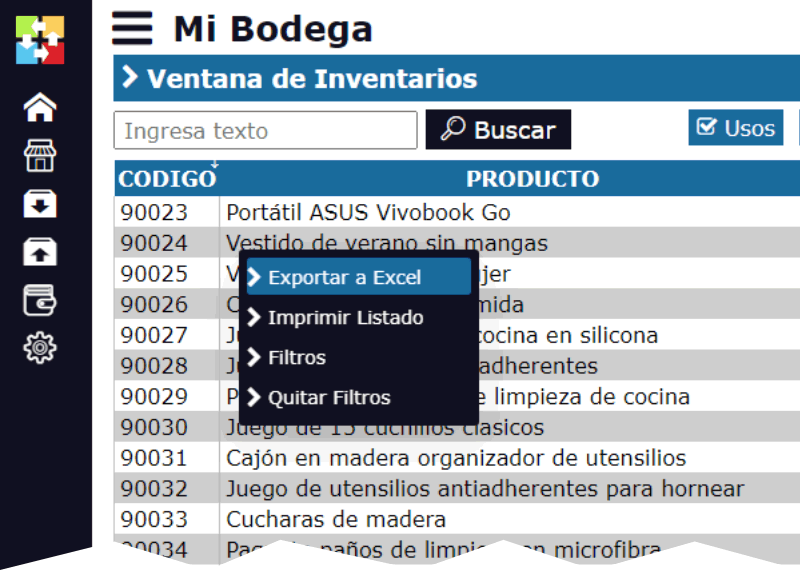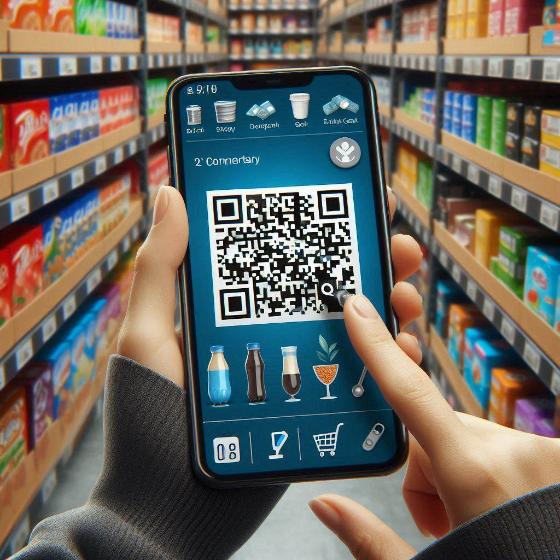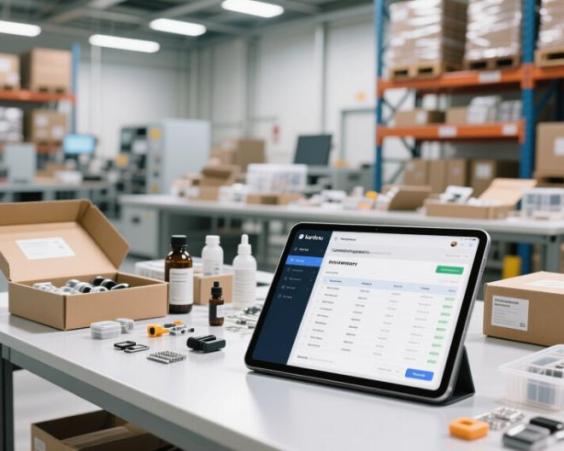Frequently Asked Questions
Frequently Asked Questions

Our accounting and administrative software helps SMEs manage finances, billing, and inventory control from a single platform. It facilitates the automation of accounting processes, reduces errors, and allows real-time monitoring of the business. Ideal for those looking for an accessible, easy-to-use solution tailored to their specific needs, ensuring efficient and accurate management of their business.
A Kardex is a detailed inventory control record that helps businesses monitor stock availability, calculate costs, and understand product rotation. It is a fundamental tool for avoiding stockouts and maintaining an organized and up-to-date inventory, facilitating financial and operational decision-making within the business.
A free inventory management software is ideal for small businesses looking to manage their stock without investing in expensive systems. It allows you to register products, control stock levels, and track entries and exits, optimizing inventory management. Although free, these solutions can offer robust functionalities such as basic reports and low stock alerts, helping you maintain full control of your inventory efficiently.
VAT (Value Added Tax) is an indirect tax applied to most sales of goods and services. It is included in the price of products and is paid by the final consumer. Companies collect it and then submit it to the state. Its purpose is to generate revenue for the government and affects both individuals and businesses in their commercial transactions.
A balance sheet is a financial report that shows the economic situation of a company at a specific moment. It details assets, liabilities, and equity, providing a clear view of what the company owns and owes. It is used to evaluate financial stability and make strategic decisions. It is essential for understanding a company''s status and planning its growth.
A payment receipt is a document that confirms a payment has been made for a good or service. This document details the amount paid, the transaction date, and the description of the purchased product or service. It is essential for both the seller and the buyer, serving as proof of the transaction and may be required for accounting or tax purposes. Receipts are essential in managing any business''s finances.
A sales invoice is a commercial document that details the transaction between a seller and a buyer. It includes information such as the description of the goods or services, the quantity, the unit price, and the total amount to be paid. Additionally, the invoice must contain tax information for both parties, such as the tax identification number. This document is essential for maintaining proper financial control and can be used as evidence in case of commercial disputes.
Creating barcodes and QR codes for free is easy and fast with various online tools. These solutions allow businesses and entrepreneurs to generate custom codes that can be used for products, promotions, or contact information. Simply enter the required data, select the format, and download the generated code. This functionality is ideal for improving inventory management, facilitating access to information, and optimizing the customer experience.
Point of sale (POS) software is essential for small and medium-sized businesses. It allows managing sales, inventory, and customer relationships efficiently. With features such as payment processing, stock tracking, and report generation, this type of software helps optimize operations and improve decision-making. Choosing the right POS system can make a difference in a business''s profitability and growth, providing an exceptional shopping experience for customers.
An electronic invoice is a digital document that replaces the traditional paper invoice. It facilitates the issuance, receipt, and storage of invoices efficiently and securely. By adopting this system, businesses can reduce costs, minimize errors, and comply with tax regulations. Additionally, electronic invoices allow for faster and more accurate management of accounts receivable and payable, improving financial administration and streamlining accounting processes.
A digital catalog is a crucial tool for showcasing your products or services attractively and accessibly. It allows customers to easily browse your offerings, with images, descriptions, and prices at their fingertips. By digitizing your catalog, you can instantly update it, reach a wider audience, and improve the customer experience. Additionally, a digital catalog optimizes inventory management and simplifies the purchasing process, boosting your sales and increasing your business''s visibility.
Inventory management is crucial for the success of any online store. It allows maintaining precise control over stock, avoiding overselling, and ensuring products are available for customers. Integrating an inventory management system with your online store optimizes product flow, improves operational efficiency, and provides valuable information on purchasing trends. This way, you can make informed decisions that increase customer satisfaction and boost your sales.
Generating digital and printed receipts is essential for any business. Digital receipts offer an efficient way to document transactions and can be easily sent by email, improving the customer experience. On the other hand, printed receipts are useful for those who prefer a physical record. Having software that facilitates creating both types of receipts ensures your customers receive accurate information, reinforcing trust in your business.
A virtual product catalog is a key tool for any modern business. It allows customers to explore your offerings quickly and easily, improving the shopping experience. With attractive images and detailed descriptions, a virtual catalog not only showcases products but also informs customers about features and prices. This tool also simplifies inventory management and real-time updates, ensuring you always provide the most accurate and relevant information to your customers.
Real-time inventory allows businesses to manage their stock efficiently and effectively. This tool provides instant updates on product availability, helping avoid stockouts and excess inventory. With a real-time inventory system, businesses can optimize operations, improve decision-making, and provide better customer service. Continuous visibility of stock levels facilitates more agile and precise resource management.
Inventory reports are key tools for efficiently managing stock in any business. They allow analyzing product availability, identifying sales trends, and detecting potential stock issues. With accurate reports, businesses can make informed decisions about purchases and storage, improving profitability and workflow. Additionally, they facilitate regulatory compliance and optimize communication between teams, ensuring everyone is aligned with the current inventory status.





